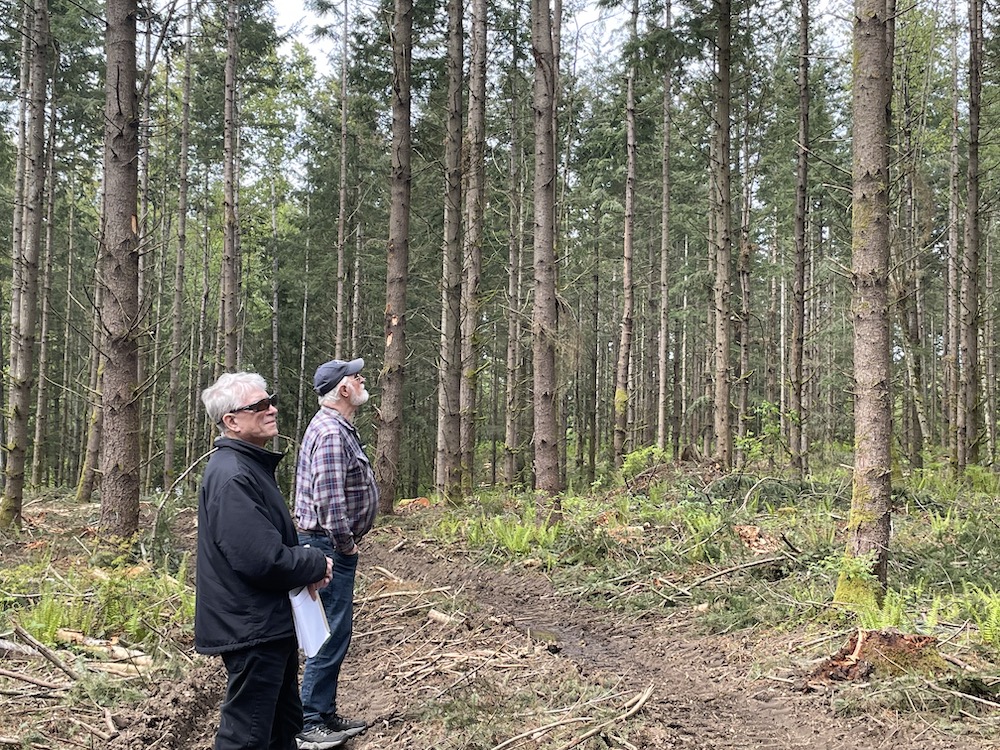
- Details
- By Cody Desautel, Intertribal Timber Council
- Opinion | Op-Ed
Guest Opinion. The continuing failure of the United States to meet its stewardship and trust responsibilities is putting U.S. and tribal forests at risk of catastrophic loss from insects, disease, and wildfire.
These are the conclusions of the fourth Indian Forest Management Assessment Team (IFMAT) report, which Congress and the White House require every 10 years under the National Indian Forest Resources Management Act.
The report’s dire warnings should concern all Americans. Forests are central to all Americans’ quality of life. Tribal forests are found in almost every state, covering about 20 million acres. They are part of a national network of forests that provide clean air and water, wildlife habitat, climate change solutions, and rural jobs.
Ongoing funding shortfalls expose forests and tribal communities to wildfire, climate change, and other risks.
The federal government has a fiduciary duty to protect the health and productivity of forests held in trust for the benefit of the tribes that own them. IFMAT reported that Indian forests are at risk of loss from climate change, insects, disease, and fire due to chronic underfunding and understaffing that has persisted for decades. IFMAT found an annual increase of $96 million is needed to reach per-acre parity with National Forest and Bureau of Land Management lands. The funding gap is widening. Compared with levels of support provided to other federal agencies, funding has declined by almost 36% since the previous IFMAT report.
The report also shows annual timber harvests are only 50% of the allowable levels under tribal forest management plans. This results in up to $40 million in lost annual revenue and employment opportunities for tribal communities and deteriorating forest health.
Tribal economies are further impacted by the lack of wood-processing infrastructure and reduced market competition for tribal forest products, which limits economic sustainability. An increase in funding and staffing is needed to enable tribes to accomplish more forest and fire management goals, contribute to tribal and local economies, and increase resilience to rapid changes driven by climate change.
Significant investments are needed for maintaining roads and fighting wildfires. The U.S. Forest Service indicates that at least 7.9 million acres of tribal forests are classified as “High/Very-High Wildfire Hazard Potential.” An estimated 25% of the total acres would need to be treated using prescribed fire and/or thinning to minimize effects in the event of catastrophic wildfire. Reducing barriers to using these tools is necessary. For example, reducing barriers to using prescribed fire could reduce catastrophic wildfires.
Across the country, Indian forestlands are diverse, but they all have one thing in common: they are vital for tribal communities and ecosystems. Tribal forests provide food, medicine, habitat for plants and animals, timber revenue, employment, recreation, protection of water and soils, and cultural and spiritual sanctuaries.
The Intertribal Timber Council urges collaborative stewardship on all federal lands to improve forest health for all Americans.
Increasingly, tribes are focusing their forest management on traditional uses, forest restoration, forest resilience, and non-timber forest products. Indian forestry presents a promising model of sustainable stewardship. Tribes are ready and have been able to do more with less but could do much more if adequate funding and staffing are provided to meet both on‑reservation management objectives and co-stewardship goals with adjacent land managers.
Tribal holistic management proactively addresses forest health issues through silviculture treatments like thinning and harvest, and post-wildfire restoration through salvage operations and replanting. Tribes are also well positioned to help sustainably manage adjacent forestlands managed by the U.S. Forest Service, the Bureau of Land Management, and other forestland owners.
Drier, fire-prone tribal lands are not immune to fuel accumulation issues and the impacts of climate change—longer fire seasons, ecological drought, and drier fuels. The authors of the IFMAT report observed many examples of tribal lands being actively managed to have diverse climate-smart structures. This active management uses a variety of silvicultural tools, such as prescribed cultural burning, to increase resistance and resilience to wildfires and climate change—a pattern much more apparent on tribal lands than neighboring public and private forestlands.
The risk posed by the lack of adequate funding and staffing needed for stewardship is avoidable. The Intertribal Timber Council calls on tribal governments to work with Congress and the Biden administration to implement the key funding recommendations in the IFMAT report.
Cody Desautel is the president of the Intertribal Timber Council and the executive director of the Confederated Tribes of the Colville Reservation in Washington. Established in 1976, the Intertribal Timber Council is a nationwide nonprofit consortium of Indian tribes, Alaska Native Corporations, and individuals dedicated to improving the management of natural resources of importance to Native American communities.